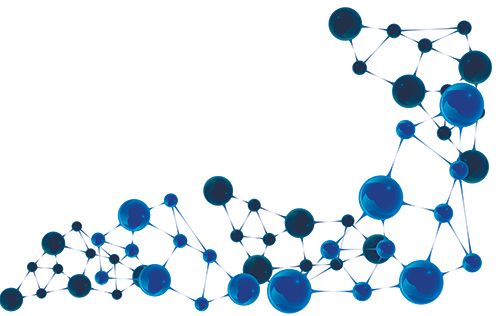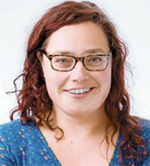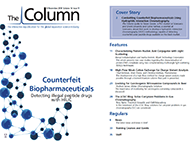Combatting Counterfeit Biopharmaceuticals Using Hydrophilic Interaction Chromatography
The Column spoke to Steven Janvier, a PhD student at Sciensano and Ghent University (Belgium), and Celine Vanhee, a scientist at Sciensano, about their work to develop a hydrophilic interaction chromatography (HILIC) methodology capable of detecting counterfeit polar peptide drugs available on the black market.
Photo Credit: veiksme/stock.adobe.com

The Column spoke to Steven Janvier, a PhD student at Sciensano and Ghent University (Belgium), and Celine Vanhee, a scientist at Sciensano, about their work to develop a hydrophilic interaction chromatography (HILIC) methodology capable of detecting counterfeit polar peptide drugs available on the black market.
Q. When did illegal peptide pharmaceuticals start to emerge and why are they an issue?
Celine Vanhee: One of the saddest and most famous reports of these illegal practices with substandard or falsified medicines* occurred in 1988 (1). A distinguished professor of pharmacology and former general director of Nigeria’s National Agency for Food and Drug Administration and Control, Dr Dora Nkem Akunyili, reported to have witnessed the death of her 21-year-old sister from a hyperglycaemic episode and the ineffectiveness of the administered insulin, which turned out to be fake. It stands to reason that Nigeria is not the only country in the world where the use of substandard or falsified lifesaving biotherapeutics (confined to peptides and protein drugs, regardless of their origin) resulted in a deadly outcome or a lack of treatment.
Indeed, fake versions of the monoclonal anticancer drug, Avastin, which was first approved by the FDA in 2004, were found in the USA in 2012. These samples did not contain the desired molecule, but were filled with starch. Since then numerous alerts, describing the reintroduction of stolen batches of these type of drugs by malignant entities, have been issued by the WHO. However, no guarantee can be given to the customer about the quality or effectiveness of the product. There have been examples in the past where a degradation of the product took place, which probably occurred from improper storage conditions, or from tampering with the amount of active pharmaceutical ingredient (API).
As well as lifesaving drugs, unregistered, unlicensed, or unapproved biotherapeutics have been encountered more frequently, and by different controlling agencies, in the last two decades (2,3). Very often these types of molecules are used as sports performance enhancers or physical enhancers, such as the popular skin tanner, melanotan II. Furthermore, “magical cures”, such as anti-ageing research peptides and synthetic cognition-enhancing peptides, are gaining popularity amongst the general public and were present in several samples that have been confiscated by regulatory agencies (4–7).
As there is limited clinical and toxicological information on these products they cannot be considered safe. Indeed, the presence of such a peptide API in samples is already considered a hazard. There are also other potential issues because chemical or biological impurities and contaminants could be encountered and these confiscated products are not subjected to strict quality assurance criteria.
These issues were well illustrated by our research group when a systematic screening of a sample set containing the 10 most frequently encountered illegal peptides purchased from three popular online providers demonstrated that multiple hazards were present on the level of the API (varying dosages, low purity), unknown APIârelated impurities, while contaminants with lead and inorganic arsenic and pathogenic haemolytic bacteria were also identified (8,9). In addition, pathogenic microorganisms or their toxic constituents (endotoxins) have also been discovered in fake anti-cancer monoclonal antibodies.
Q. In 2015 you developed a reversed-phase liquid chromatography (LC) method to screen for illicit peptide drugs in goods seized by customs and legal agencies (5). How well did this method work in practice and were there any limitations?
CV: The method is currently still being used by our official medicines control laboratory (OMCL) to screen for lower molecular weight (Mw) peptides (Mw ≤ 5 kDa). The library now includes the retention time and spectra of almost 50 illegal peptide drugs. Moreover, two years ago, a light version of our identification strategy was condensed into a general recommendation paper for the General European OMCL Network. However, with this gradient it was impossible to chromatographically separate higher molecular weight biotherapeutics, such as the different insulins and insulin-like growth factors. For these type of molecules, different LC methods have been generated, published, and are currently used (10,11). Some very hydrophilic molecules such as epitalon could not be quantified by this methodology and therefore an alternative LC method, compatible with MS needed to be developed (5).
Q. This new methodology uses hydrophilic interaction chromatography (HILIC). Why was HILIC chosen as opposed to other available techniques?
Steven Janvier: HILIC was chosen because several reports in the literature showed a nice separation of multiple peptides with different properties on these type of columns, even when MS-compatible solvents were used (12,13). Other separation methods were incompatible at the time if no post-column modifications were incorporated. For example, the removal of salts in size-exclusion or ion-exchange. Therefore, surpassing the goal for a feasible and easy-to-implement method.
Q. What are the specific advantages of zwitterionic HILIC columns for this project?
SJ: The aspects we deemed most important were the chromatographic parameters resolution and peak symmetry and the longevity of the column. The zwitterionic HILIC column stood out because it separated multiple peptides with a wide variety of characteristics. For this reason, we selected the zwitterionic HILIC for further optimization. It stood out because it separated multiple peptides with a wide variety of characteristics and resulted overall in a favourable peak shape for all peptides of interest. All other columns demonstrated chromatographical issues regarding the peak shape for one or multiple peptides from our subset, while demonstrating excellent chromatographic performance for the remaining peptides. For this reason, we selected the zwitterionic HILIC column for further optimization.
Q. Do you have any comments on manipulating selectivity using the zwitterionic HILIC columns?
SJ: It’s well documented in the literature that changes in eluent composition, the addition of additives, and differences in pH can significantly change selectivity and peak shape. These effects are however strongly dependent on the type of analyte or analytes, and are therefore case-dependent.
In our case, we set out to design a dilute-and-shoot methodology to identify potential API(s) and screen for potential impurities and contaminations in these illegal preparations. Our method had to be able to handle multiple analytes with a variety of individual properties. In this context, ammonium formate resulted in the overall best performance, although other additives, such as ammonium acetate, resulted in better separation and peak shape but only for some individual peptides.
Due to the dilute-and-shoot aspect and interest in potential (unknown) impurities and contaminations, the only purification step was the centrifugation at 20,000 × g for 15 min prior to injection. Therefore, we opted for the usage of the eluent at initial conditions as sample solvent to rule out any potential solubility or mixing effects. For some (polar) peptides with a Mw below 3 kDa, however, more satisfactory separation results were achieved with sample solvents containing a percentage of 10–20% ethanol or isopropanol.
With regard to the third factor-the pH of the eluent-since mass spectrometry (MS) was mandatory for the unambiguous identification of the different illegal peptides, we were limited to a pH of 3.0. Therefore, we didn’t perform any experiments with a higher pH while higher acidities were not recommended with our type of zwitterionic HILIC. The pH of the eluent is, however, generally acknowledged as a variable with potentially a significant influence on the chromatographic performance, and may be an important tool to manipulate the selectivity in other types of analyses with zwitterionic columns.
Q. An online cleaning step was added to address the interference of illicit preparations or matrices used as these were having a negative effect on the column performance. Given the potential for these ingredients to be equally dangerous would the previously mentioned reversed-phase LC method be suitable for their screening or would a separate method be required for their testing?
SJ: To elaborate on the addition of the online cleaning step, during the experimental testing to select the most suitable column, we used “real- life” falsified peptide samples and we never encountered any issues. However, issues started when we tested multiple potential matrix constituents at varying concentrations and combinations. We solved these issues by the incorporation of an online cleaning step, which presumably removes any matrix constituents that might have been retained on the column.
CV: Most of these matrix compounds, such as mannitol, coelute with the solvent peak in reversed-phase LC or are not visible on LC–MS, an example of this would be elemental impurities. Therefore, in order to fully screen a sample for potential toxic impurities, a more holistic approach, including inductively coupled plasma–mass spectrometry (ICP)-MS, gas chromatography (GC)–MS and small molecule LC-MS2 settings for the respective determination of elementals and chemical contaminants is mandatory. Furthermore, other techniques, such as sterility testing (whether or not combined with the identification of microorganism by means of matrix-assisted laser desorption–ionization time-of-flight [MALDI-TOF] or classical DNA sequencing), and immunological assays for the detection of pyrogenic substances, are required to give a more comprehensive view of the potential dangerous substances present in the vial.
Q. What advice would you give to chromatographers wishing to use this method with regards to reproducibility and getting the most out of the column? Do you have any advice for analysts using HILIC for the first time?
SJ: Reproducibility of our method using zwitterionic HILIC was quite good with the exception of the period where we tested multiple potential matrix constituents at varying concentrations and combinations. The online cleaning step resolved the issues we then encountered. Nonetheless, we always follow the minimal recommendations, such as required equilibration prior to analysis, and incorporate a known standard to evaluate the repeatability and reproducibility between different analyses for the parameter’s retention time, area, and peak shape. We also washed the column frequently, sometimes with a 100% aqueous phase with at least 20 mM ammonium formate, and store the column in the recommended storage solvent. That all takes time. To anyone who is used to working with reversed-phase LC and will use HILIC for the first time, we would say that HILIC is a powerful separation technique but in general less stable than traditional C18 columns, which has to be taken into account. Multiple stationary phases, including mixed modes, are available that may be very interesting and useful because they may interact differently with the analyte or analytes of interest.
Q. What are you currently working on?
SJ: Currently, I’m performing a pyrogen detection assay on the abovementioned peptide drugs and I’m also finishing my PhD.
Q. Anything else you would like to add?
CV: The screening methods described by our group are easy, compatible to full-screen MS, which is of course mandatory, and currently used for real-life samples. Although we have used these two LC methods separately, it would be interesting to perform two-dimensional (2D)-LC–MS for screening purposes. Additionally, it would also be interesting to test the recently emerged mixed mode columns on the sample set.
*According to the recent WHO definition to unify the semantics on the topic.
References
- A. Harding, The Lancet 367, 1479 (2006).
- B.J. Venhuis, P.H.J. Keizers, R. Klausmann, and I. Hegger, Drug Test. Anal.8, 398–401 (2016).
- S. Janvier, B. De Spiegeleer, C. Vanhee, and E. Deconinck, J. Pharm. Biomed. Anal.161, 175–191 (2018).
- C. Vanhee, G. Moens, E. Van Hoeck, E. Deconinck, and J.O. De Beer, Drug Test. Anal.7, 259–264 (2015).
- C. Vanhee, S. Janvier, B. Desmedt, G. Moens, E. Deconinck, J.O. De Beer, and P. Courselle, Talanta142, 1–10 (2015).
- O. Krug, A. Thomas, K. Walpurgis, T. Piper, G. Sigmund, W. Schänzer, T. Laussmann, and M. Thevis, Eur. J. Clin. Pharmacol.70, 1303–1311 (2014).
- I.R. Hullstein, H. Malerod-Fjeld, Y. Dehnes, and P. Hemmersbach, Drug Test. Anal.7, 1025–1029 (2015).
- S. Janvier, E. Wattijn, N. Botteldoorn, B.D. Spiegeleer, E. Deconinck, and C. Vanhee, Drug Test. Anal.10, 791–795 (2017).
- S. Janvier, K. Cheyns, M. Canfyn, S. Goscinny, B. De Spiegeleer, C. Vanhee, and E. Deconinck, Talanta188, 795–807 (2018).
- C. Vanhee, S. Janvier, G. Moens, S. Goscinny, P. Courselle, and E. Deconinck, Drug Test. Anal.9, 831–837 (2017).
- C. Vanhee, S. Janvier, G. Moens, E. Deconinck, and P. Courselle, J. Pharm. Anal.6, 326–334 (2016).
- M. Gilar and A. Jaworski, J. Chromatogr. A1218, 8890–8896 (2011).
- S. Van Dorpe, V. Vergote, A. Pezeshki, C. Burvenich, K. Peremans, and B. De Spiegeleer, J. Sep. Sci.33, 728–739 (2010).

Steven Janvier has an MSc in bioengineering and is currently a PhD student at Sciensano and Ghent University (Belgium),

Celine Vanhee has a Ph.D. in biochemistry and is a scientist at Sciensano.
E-mail:Steven.Janvier@sciensano.be / Celine.Vanhee@sciensano.be

Polysorbate Quantification and Degradation Analysis via LC and Charged Aerosol Detection
April 9th 2025Scientists from ThermoFisher Scientific published a review article in the Journal of Chromatography A that provided an overview of HPLC analysis using charged aerosol detection can help with polysorbate quantification.
Removing Double-Stranded RNA Impurities Using Chromatography
April 8th 2025Researchers from Agency for Science, Technology and Research in Singapore recently published a review article exploring how chromatography can be used to remove double-stranded RNA impurities during mRNA therapeutics production.














